Exploring the Disruption of Gender Norms, the Fluidity of Sexuality, and the Rise of Queer Narratives Across Literature and Society
From The Professor's Desk
“Gender is not something we are, but something we do.”
The Evolution of Queer Identities in Literature and Society
For centuries, society lived under the invisible rule of the male/female binary, a framework that defined every aspect of life—from the roles we played to the desires we could have. This rigid division of the world into two genders was enforced so completely that any deviation from the norm was met with fear, repression, or worse, the label of being a “disease”, a “disorder”, or even a taboo. This framework dictated not just the roles that men and women played, but who they could love, how they should live, and even how they should be seen by society.
For centuries, queer identities were largely either invisible or marginalized. Early literature didn’t just ignore queer love and desire; it actively erased them. “Deviations from the heterosexual norm were seen as illness,” as Eve Sedgwick wrote in Epistemology of the Closet—a sentiment that permeated literary discourse, medical theories, and cultural attitudes for centuries. In fact, homosexuality was, until the mid-20th century, treated as a mental illness by the medical community, and even transgender identities were erased or pathologized.
This repressive approach didn’t just suppress individual sexual identities; it also kept queer people from finding their place in society—both socially and in literature. For a long time, the only place we could see queer identities in literature was through metaphor—hidden, subtle, and coded. Literary figures like Sappho, who wrote poetry that expressed love for women, were often relegated to the margins of history, their work either ignored or only understood in the context of heterosexual readings. The world’s “standard” view of gender became so normalized that queer love became almost unimaginable in mainstream narratives.
But then, with the rise of queer theory in the late 20th century, everything began to shift. This intellectual movement, led by thinkers like Judith Butler and Eve Sedgwick, came to challenge and disrupt the dominant norms of gender and sexuality. “Gender is not something we are, but something we do,” Butler famously asserted in Gender Trouble (1990), breaking down the traditional binary structure of gender and calling for a redefinition of gender and sexual identity. Butler’s argument—that gender is performative, not innate—opened up new avenues for thinking about how identities are constructed, performed, and regulated by cultural norms.
Queer theory further pushes against the restrictions of the heterosexual matrix Sedgwick describes, showing that the closet—that metaphorical space where queer identities are hidden—is not only personal but socially enforced. “The closet,” Sedgwick wrote, “is a space that contains the repression of desire, but it also contains the repression of truth.” And with queer theory, truth began to surface in the most unexpected places: in literature, in film, and in the arts.
Literature, once a space of silence, began to open up. Jeanette Winterson’s Oranges Are Not the Only Fruit (1985), for example, tells the story of a young lesbian who navigates the conflict between her sexuality and the religious and familial pressures that seek to suppress it. Winterson’s protagonist, Jeanette, struggles to reconcile her identity with the norms of heterosexuality imposed by her community. Yet, her story is not about mere survival—it is about agency, desire, and self-acceptance. In these narratives, queer identities are no longer hidden but are celebrated.
Take also Virginia Woolf’s Orlando, where the protagonist, Orlando, transcends gender and time. The character changes gender midway through the novel, creating a narrative that resists binary gender roles entirely. Woolf’s work asks, “What if gender was not fixed?” By presenting a character whose gender is fluid and whose identity evolves, Woolf was one of the first to illustrate how gender itself is an imperfect construct.
Fast forward to today, where queer literature is more visible than ever. Queer representation, from web series to mainstream films, has gone from something that was whispered about in the shadows to something that is celebrated on screen and in print. While challenges still persist—especially in conservative societies—the shift is undeniable.
Queer voices in literature and media have not only opened up new opportunities for representation, but also redefined societal values regarding identity and sexuality. As Judith Butler asserts, we are now in a world where gender is not something we simply have—it is something we create, transform, and reinterpret.
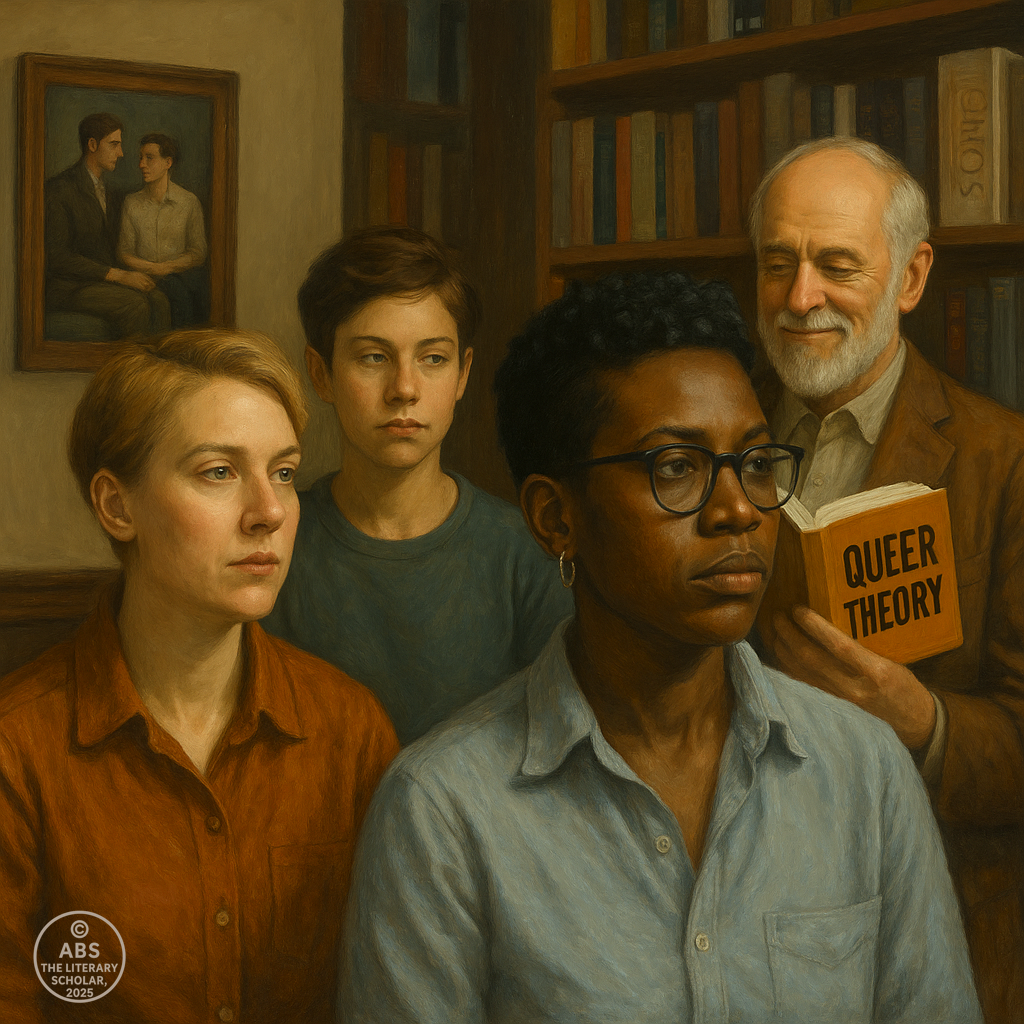
Introduction to Queer Theory and LGBTQ+ Narratives
For as long as history has been written, the world has been neatly divided into two categories: male and female, a binary that shaped everything from the roles we played in society to the desires we were allowed to feel. This division was not just a social construction—it was a truth that governed our lives, our relationships, and our literature. Anything outside of these rigid categories was considered not just different, but often invisible, unnatural, or even dangerous. Society didn’t just silence queer identities—it erased them, leaving little to no room for expression.
For centuries, same-sex love or gender nonconformity wasn’t just unspoken; it was treated as a taboo, a disorder, or a disease. In fact, the medical community once classified homosexuality as a mental illness—and even transgender identities were erased or pathologized. “Taboo,” the kind of word we dare not utter, yet lived in the shadows of societal norms, was how society viewed any deviation from the heterosexual norm.
“Deviations from the heterosexual norm were seen as illness.”
— Eve Sedgwick, Epistemology of the Closet
This repressive approach didn’t just suppress individual sexual identities; it also kept queer people from finding their place in society—both socially and in literature. For a long time, the only place we could see queer identities in literature was through metaphor—hidden, subtle, and coded. Literary figures like Sappho, who wrote poetry that expressed love for women, were often relegated to the margins of history, their work either ignored or only understood in the context of heterosexual readings. The world’s “standard” view of gender became so normalized that queer love became almost unimaginable in mainstream narratives.
But then, with the rise of queer theory in literature in the late 20th century, everything began to shift. This intellectual movement, led by thinkers like Judith Butler and Eve Sedgwick, came to challenge and disrupt the dominant norms of gender and sexuality. “Gender is not something we are, but something we do,” Butler famously asserted in Gender Trouble (1990), breaking down the traditional binary structure of gender and calling for a redefinition of gender and sexual identity. For Butler, gender is not something we are born with but something we perform—it is a cultural script written and rewritten through our actions and words.
“The closet is a space that contains the repression of desire, but it also contains the repression of truth.”
— Eve Sedgwick, Epistemology of the Closet
Sedgwick’s theory suggests that the closet—that metaphorical space where queer identities are hidden—is not only personal but socially enforced. This suppression of truth shaped much of the way heterosexuality and homosexuality were represented in literature and culture. By deconstructing this idea, queer theory opens up new avenues for reading and understanding sexuality, and in turn, it challenges the very foundations of gender and sexual identity.
Virginia Woolf’s novel Orlando is a perfect example of how queer theory has influenced literary texts. The protagonist, Orlando, transcends gender and time, embodying the very fluidity that queer theory celebrates.
“I will not say that I am a woman, I will not say that I am a man. I will say that I am both, and none.”
— Virginia Woolf, Orlando
Here, Woolf pushes the boundaries of traditional gender roles, suggesting that identity is not a fixed state but rather something fluid and transformable.
In the world of queer theory in literature, identity is not something predetermined by biology or society’s expectations—it is something we make and remake through our experiences, desires, and relationships. Queer theory’s impact on literature has been profound, providing a lens through which we can read classic texts anew, uncovering the subversive desires and hidden narratives within. In works like Toni Morrison’s Beloved and Jeanette Winterson’s Oranges Are Not the Only Fruit, queer theory invites us to see how these texts queer their representations of love, identity, and gender, opening up new interpretations that celebrate fluidity rather than fixity.
“Love is not asexual. It is about desire. It is a rebellion.”
— Jeanette Winterson, Oranges Are Not the Only Fruit
In today’s world, the queer narrative has gained considerable ground, but the journey is far from over. Despite significant strides toward visibility, many queer characters are still relegated to the margins or depicted through the lens of suffering. As we continue to embrace these new queer identities, we must remember that acceptance is not always straightforward, and queer individuals still face barriers in mainstream media and society.
“Deviations from the heterosexual norm were seen as illness.”
— Eve Sedgwick
The acceptance of queer theory in literature marks a new era of freedom—one where identity is no longer confined by rigid definitions but is instead celebrated for its fluidity. Queer theory’s mission? To say that no one’s identity is ever fixed—and that’s worth celebrating. It’s about accepting that desire is fluid, gender is diverse, and identity is a personal journey, not one dictated by society’s narrow rules. This is the power of queer theory, and it’s only growing stronger.
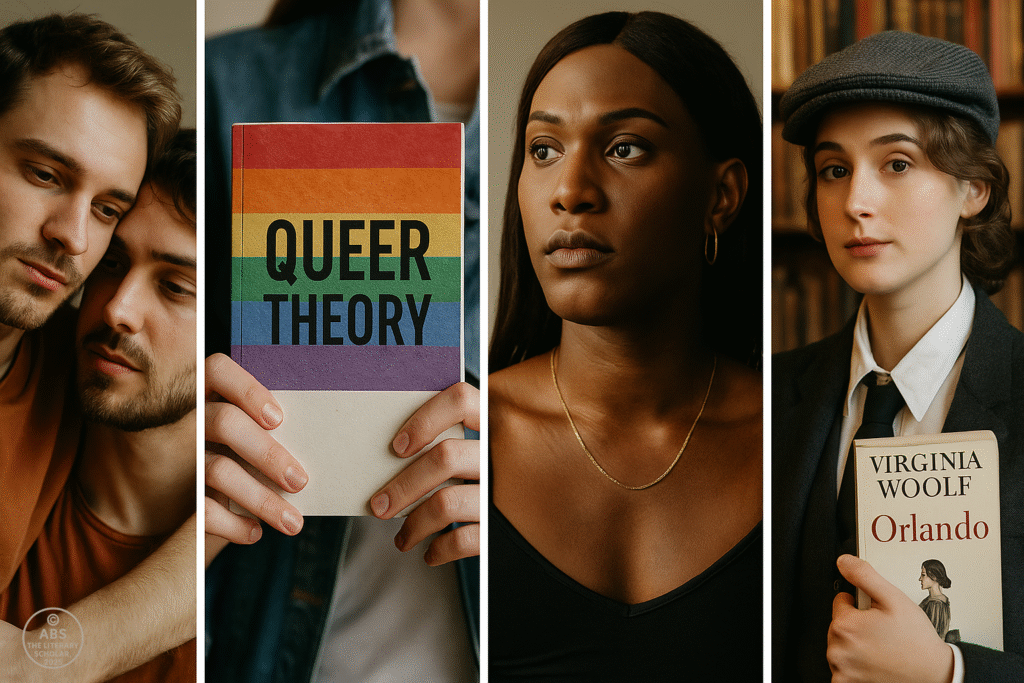
2. Historical Suppression: The Erasure of LGBTQ+ Identities
For much of history, LGBTQ+ identities were either hidden in the shadows or eradicated entirely. From ancient times to the early modern era, individuals who didn’t fit within the heteronormative framework of male and female, or the conventional understanding of sexuality, were treated with suspicion, repression, and often outright violence. Cultural and legal structures, deeply intertwined, sought to silence and erase queer identities, maintaining the illusion of a world governed strictly by the heterosexual binary.
For many centuries, any deviation from heterosexuality was not only unacceptable, but criminalized. This period, marked by legal suppression, often used the language of morality and religion to justify harsh laws against same-sex relationships. In Ancient Greece, where relationships between men were not only accepted but celebrated, we still find contradictions and restrictions for women’s sexual and social autonomy, marking the beginning of a gendered divide that continues into modernity. While love between men in certain forms was romanticized in the classical world, the concept of queer identities as we understand them today was not fully realized, as there were very few spaces for people to openly claim non-heteronormative identities.
With the rise of Christianity in the Middle Ages, the repression of LGBTQ+ individuals became more formalized. The Church became a primary institution enforcing the moral codes of society, and sexuality was placed within a rigid heterosexual marriage structure, intended to uphold religious laws. Same-sex desire was condemned as sinful, as noted in Biblical texts and decrees by the Church, leading to the demonization of any sexual behavior outside of a heterosexual marriage. Medieval legal codes included severe punishments for sodomy, and those who engaged in homosexual acts could face public humiliation, imprisonment, or worse, execution.
In the 16th and 17th centuries, the enforcement of these laws took on an even more formalized structure, particularly in Europe. The criminalization of homosexuality reached its peak with laws such as England’s Buggery Act of 1533, which made any same-sex sexual act punishable by death. Throughout the Enlightenment and Victorian eras, individuals found themselves persecuted by legal systems that not only saw homosexuality as criminal but as a moral failing. The word “sodomy” was frequently used as a catch-all term for any behavior that deviated from the prescribed heteronormative sexual practices.
One of the most infamous instances of legal and cultural repression came in the form of the Oscar Wilde trial of 1895. Wilde, a renowned playwright, was publicly shamed, and his works, particularly his love affair with Lord Alfred Douglas, were used as the foundation of the trial. Wilde’s conviction for gross indecency led to a two-year prison sentence and marked a pivotal moment in the public perception of LGBTQ+ identities. His fall from grace, coupled with the legal persecution of homosexuality, was not an isolated event, but part of a wider societal belief that same-sex love was something to be hidden, feared, and punished.
“The world is not interested in the ideals of men. The world is not interested in their virtues. The world is interested in their vices. A man’s vices, not his virtues, are what will be published. That is the truth of the world.”
— Oscar Wilde, De Profundis
By the early 20th century, the suppression of LGBTQ+ identities began to shift, but not without a continued pattern of invisibility and marginalization. Cultural norms, bolstered by scientific theories that considered homosexuality to be a form of mental illness, kept many LGBTQ+ individuals in the closet. The psychiatric establishment also played a significant role, diagnosing homosexuality as “pathological” and attempting to cure it through conversion therapy or other harmful practices.
It wasn’t until the 1960s and 1970s that the LGBTQ+ liberation movement began to take shape, spurred on by the Stonewall Riots of 1969 in New York City. For the first time, LGBTQ+ people began to organize publicly, demanding equal rights and recognition. The decriminalization of homosexuality in many Western countries, starting in England in 1967, marked the beginning of a broader global shift toward acceptance, though legal barriers and social stigma remained entrenched in many parts of the world. It was a slow process, and LGBTQ+ individuals continued to fight for their place in society.
The decriminalization of homosexuality, the fight for marriage equality, and the eventual push for transgender rights in the 21st century were hard-won battles that were shaped by the earlier years of suppression and erasure. LGBTQ+ people had to fight not only for acceptance but for the right to exist openly, to live their lives without the constant threat of punishment or violence.
In literature, the history of repression was evident in the absence of queer voices. Early literary representations of queer love were often hidden, ambiguous, or distorted. Characters were forced to remain in the shadows or were depicted with tragic endings. But, as queer theory emerged and LGBTQ+ voices began to rise, the literary world started to reclaim these lost identities and give visibility to queer narratives. The process of reclaiming this space has been part of a larger cultural movement to embrace diversity and acceptance.
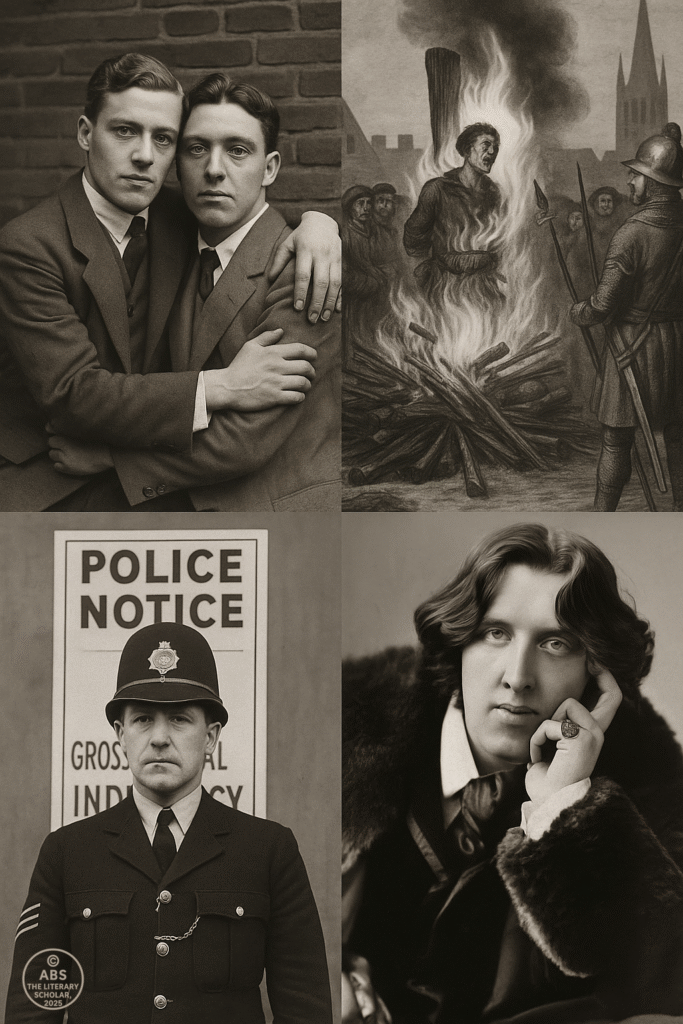
3. Gender and Sexuality Beyond the Binary: Understanding Queer Identities
For centuries, society has operated under a rigid male/female binary, an artificial construct that has determined everything from roles and expectations to desires and identities. The dominant narrative has assumed that everyone fits neatly into one of two categories: male or female. But this binary framework has never truly captured the diversity of human experiences. In recent years, the understanding of gender and sexuality has evolved dramatically, particularly with the rise of queer theory and a deeper recognition of gender fluidity and non-binary identities. These ideas are challenging the societal norm and offering a new way to think about the complexity of identity and desire.
At its core, gender fluidity refers to the idea that gender is not fixed, but shifting—it’s a spectrum, not a set of rigid boxes to check. People who identify as gender fluid may feel different genders at different times, or they may not identify with any specific gender at all. This understanding of gender goes far beyond the traditional male/female framework and invites a more expansive, inclusive view of human identity. It allows for the expression of gender to be more fluid, dynamic, and self-determined.
As Kate Bornstein so eloquently put it:
“We are all born naked. The rest is drag.”
This playful yet powerful statement underscores that gender is not an inherent, unchangeable aspect of our being, but rather something we perform, adapt, and reshape throughout our lives. This perspective allows us to break free from the rigid boundaries of male and female and recognize the diversity in between.
Non-binary identities, which encompass a wide range of gender expressions outside the male/female binary, have also gained significant recognition in recent years. Non-binary individuals may identify as a blend of male and female, neither male nor female, or as a completely different gender altogether. The term “non-binary” itself signifies that someone’s gender cannot be adequately described by the traditional male or female labels. Genderqueer, agender, and bigender are other terms used to describe the range of non-binary experiences, and they all reflect the rich diversity of gender expression that exists in the world.
One of the most prominent figures in this movement is Judith Butler, whose work on gender performativity has had a profound impact on queer theory. In her groundbreaking book Gender Trouble (1990), Butler famously stated,
“Gender is not something we are, but something we do.”
She argued that gender is not an inherent characteristic of an individual, but a set of performances that are enacted according to societal expectations. According to Butler, we are not born into a specific gender—we are taught how to perform gender roles through social norms, cultural practices, and institutional structures. This perspective shifts the focus from biology to society’s role in shaping gender, suggesting that gender is malleable and constructed through our actions.
The cultural impact of queer theory’s gender fluidity perspective cannot be overstated. Artists, writers, and performers from a range of disciplines have begun to question and subvert the male/female binary in their work. Gender fluidity has been explored in both mainstream and independent media, with increasingly complex and diverse representations of gender and sexuality. Films, TV shows, literature, and web series have featured non-binary characters, helping to normalize these identities and provide greater visibility. In literary works, authors like Virginia Woolf, in her novel Orlando, have explored characters whose gender is not fixed but fluid. Orlando, a character who changes gender over time, represents the elusive nature of gender itself, challenging traditional notions of male and female.
The increasing acceptance and representation of non-binary and gender fluid identities in popular culture reflect a wider cultural shift towards understanding gender as a social construct, not a biological certainty. However, despite these advancements, non-binary people still face considerable challenges in gaining full societal acceptance. Legal documents, for instance, still predominantly offer only male or female categories, leaving non-binary individuals without legal recognition. Gender-inclusive language and public awareness are essential in fostering a more inclusive society that celebrates the full diversity of gender identities.
The non-binary revolution in literature and media is still ongoing. While strides have been made in mainstream representation, much of the work continues to be done in the realm of independent film, queer literature, and social media. By challenging the rigid, traditional definitions of gender, queer theory is paving the way for a society that accepts the complexity and fluidity of gender and sexuality.
In conclusion, the male/female binary that has dominated our understanding of gender for centuries is no longer seen as the sole framework for human experience. Queer theory and the rise of non-binary identities provide a fresh lens through which to view human identity. By embracing gender fluidity, we open up a world where individuals can express themselves freely and authentically, without the limitations imposed by an outdated binary system. This ongoing evolution is not only reshaping how we understand gender, but also how we relate to one another, encouraging acceptance, freedom, and inclusivity in every aspect of society.
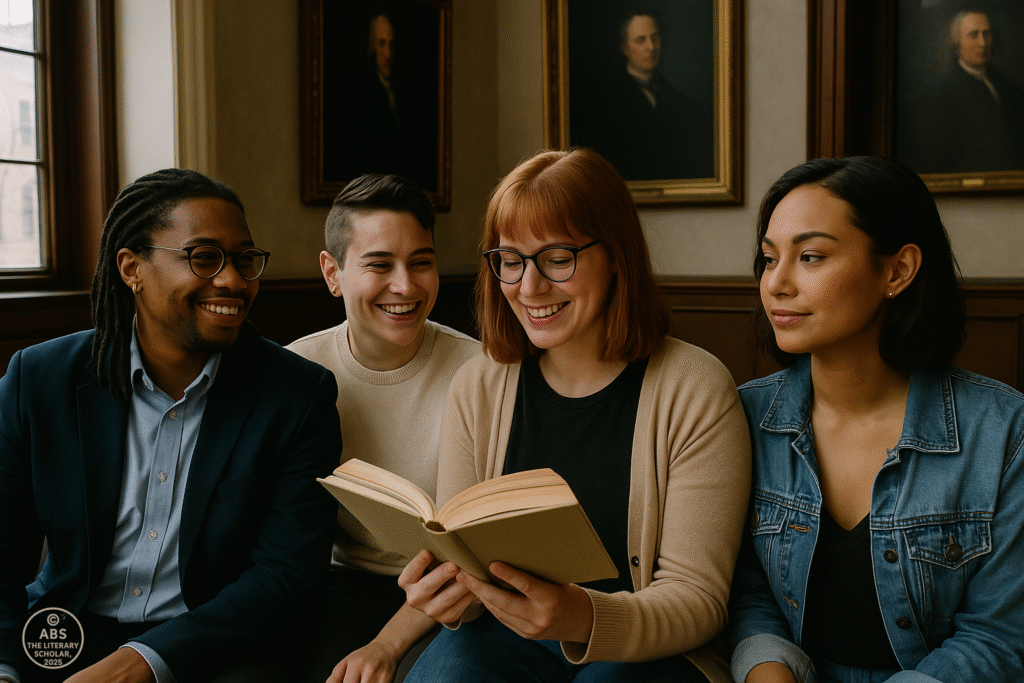
4. LGBTQ+ in Literature: Early Representation and Erasure
For much of history, LGBTQ+ characters were often absent from literature or relegated to ambiguous representations. Early works typically adhered to rigid, heterosexual norms, and any deviation from this norm was either ignored or hidden under layers of metaphor or symbolic language. The concept of queer identities—those that fall outside the traditional male/female binary—was largely silenced, and LGBTQ+ characters were rarely afforded the same visibility or agency as their heterosexual counterparts. In many cases, their stories were either suppressed or marginalized, and the very existence of queer love was deemed too dangerous or unacceptable to be openly portrayed.
As society and literature were heavily influenced by religion and patriarchal structures, early portrayals of same-sex love or gender nonconformity were either coded, veiled, or hidden. For example, in the 19th century, a subtle representation of same-sex desire could be found in the works of authors like Walt Whitman, whose poetry in Leaves of Grass includes ambiguous expressions of love between men. In poems such as “Calamus,” Whitman’s intense affection for other men is evident, but it is expressed through metaphor, leaving room for interpretation. Whitman’s love is described as a “brotherhood,” a term that could easily be read as platonic in the context of the time, but the emotions conveyed in the poem transcend friendship.
“I lean and loaf at my ease observing a spear of summer grass.”
— Walt Whitman, Leaves of Grass
Whitman’s work offers a glimpse of queer love but remains subtle, presenting the relationship between men as intimate and affectionate, though not openly sexual. Metaphor and indirection were common techniques used by writers to express queer desire without openly confronting societal expectations. The lack of explicit portrayal meant that readers were often left to read between the lines, to see the hidden meanings that were not always apparent to the general public.
In the case of Oscar Wilde, a more public figure of queer desire, his love affair with Lord Alfred Douglas was hidden behind the conventions of the time. In Wilde’s works, such as The Picture of Dorian Gray, his exploration of beauty, youth, and immorality reflects a queer subtext. Though Wilde’s writing was overtly critical of Victorian society’s moralistic views, it was still coded in ways that allowed Wilde to remain within the limits of acceptability. His works were considered to be scandalous, but they also contained a sense of elusiveness, preventing the direct expression of his own same-sex desire. Wilde famously quipped, “The only difference between the saint and the sinner is that every saint has a past, and every sinner has a future.” In many ways, Wilde’s wit was his shield against full exposure in a world that was hostile to open LGBTQ+ representation.
However, by the early 20th century, the repression of LGBTQ+ characters was no longer only a matter of indirect representation. Authors were increasingly forced to make their queer characters suffer, often ending their lives in tragedy. This is evident in E. M. Forster’s Maurice, where the protagonist, Maurice, is forced to live a life of secrecy and pain because of his love for another man. Unlike the traditional heterosexual romantic story, Maurice’s love is something that cannot be publicly expressed. The novel, written in 1913 but published posthumously in 1971, was ahead of its time in its depiction of a same-sex relationship with a hopeful ending, contrasting with the overwhelming tragic fate of LGBTQ+ characters in earlier literature. Forster was keenly aware of the social repression that prevented LGBTQ+ identities from being represented fully, and he deliberately chose a positive ending, imagining a world where queerness could be accepted rather than punished.
“I shall never forget him. And when I leave the country, I shall remember how he helped me, and I shall love him for ever. I think the time has come for me to tell him that he is the man I love.”
— E.M. Forster, Maurice
In the 20th century, literary criticism began to develop a queer lens, allowing for reinterpretations of past works. Through this lens, we began to recognize the presence of same-sex desire in works that were once assumed to be heteronormative, such as Herman Melville’s Moby-Dick and Emily Dickinson’s poetry. These works, when read with an understanding of queer theory, reveal the complex layers of desire and intimacy between characters that were previously overlooked or misinterpreted.
For much of history, LGBTQ+ characters were forced to exist in the shadows, their desires veiled by societal norms. They were erased or marginalized, but queer theory has allowed us to reclaim these narratives. In examining literature through the lens of queer theory, we can see how the voices of LGBTQ+ individuals have always been present, even if hidden or coded, and how they continue to shape the cultural narrative today.
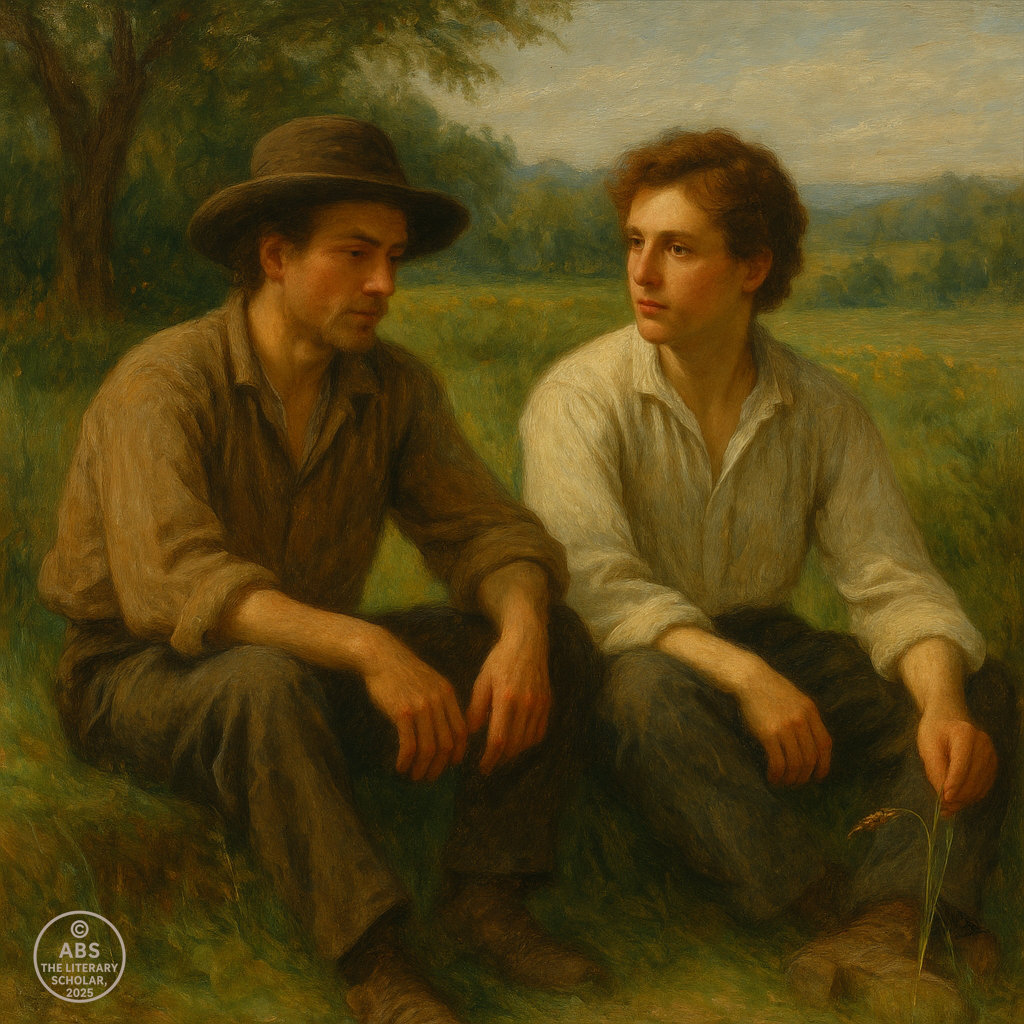
5. Queer Theory’s Impact on Literary Canon and Critical Thought
Queer theory has had a transformative impact on modern literary criticism, shifting the way we interpret classic texts and providing a fresh lens through which we can examine the complexity of gender, sexuality, and desire. Traditionally, the literary canon has been constructed around heteronormative perspectives, limiting the ways in which we read and understand the experiences of those outside the male/female binary. Queer theory, by challenging these dominant norms, allows us to open up new readings, discovering subtexts, hidden desires, and queer narratives that were once overlooked or deliberately erased.
Historically, the literary canon has been heavily influenced by heteronormative perspectives. Many classic works, whether by Shakespeare, Dickens, or Melville, were written in a world that largely ignored non-heteronormative sexualities. For centuries, same-sex love and gender nonconformity were either absent from these texts or subtly coded. It wasn’t until the rise of queer theory that scholars began to re-examine these works, uncovering the hidden desires and relationships within them. For example, Herman Melville’s Moby-Dick has long been studied as a classic adventure novel, but through a queer lens, the intense, complicated relationship between Ishmael and Queequeg emerges as a romantic bond, offering a profound commentary on love and intimacy beyond the heterosexual norm.
“The absence of desire is not an absence of feeling, but a longing that can never be fully recognized.”
— Michel Foucault, The History of Sexuality
This quote encapsulates the idea of unspoken desire, which is present in many classic texts. For instance, in Virginia Woolf’s Orlando, the protagonist undergoes a gender transition across several centuries, questioning the very notion of fixed gender roles. The novel challenges us to think of gender as a fluid experience, constructed rather than inherent. Woolf’s work aligns with queer theory by demonstrating how identities are shaped by culture and history, and how they can transcend traditional boundaries. Woolf’s Orlando offers a powerful rejection of the idea that gender is confined to one specific biological identity, and instead celebrates the possibility of transformation.
The rise of queer theory has allowed us to reexamine Shakespeare’s plays in a new light. In Twelfth Night, the themes of cross-dressing and gender ambiguity provide fertile ground for queer readings. The character of Viola, who disguises herself as a man, creates complex dynamics of sexual attraction, leading to relationships that seem to blur the line between heterosexual and homosexual desire. This questioning of gender roles within the play mirrors the core ideas of queer theory, which argues that gender and sexuality are not fixed categories, but rather social constructions that can be transformed and subverted.
“The body is not a gendered thing, nor is it a body that can be treated as though it belongs to one of two sexes.”
— Judith Butler, Bodies That Matter
Butler’s statement about the body directly challenges traditional notions of gender and sex. By applying this thinking to literature, we can read texts like Twelfth Night and Orlando through a queer lens that recognizes gender fluidity as central to the human experience. These works, often labeled as comedies or historical fantasies, become powerful explorations of identity, self-expression, and desire.
In modern literary criticism, queer theory has expanded the boundaries of what is considered acceptable in both literature and society. Queer criticism encourages us to deconstruct traditional roles and heteronormative narratives, revealing the underrepresented voices and hidden desires in texts that were once regarded as “neutral” or universal. Writers like Jeanette Winterson and Toni Morrison have paved the way for more direct portrayals of queer identities in literature, addressing the intersection of race, gender, and sexuality in ways that were previously unacknowledged.
Queer theory has also contributed to an ongoing re-evaluation of the literary canon, questioning the inclusion of heteronormative texts while providing new, queer interpretations of classic works. Through this critical lens, we are encouraged to look beyond the surface and recognize the fluidity of identity that lies beneath. The work of queer theorists has given rise to new possibilities for literary analysis, offering a way to celebrate diverse identities and interpretations that reflect the complexity of human experience.
“Literature is not a mirror held up to reality, but a hammer with which to shape it.”
— Bertolt Brecht
Queer theory serves as both a tool and a lens for reading and reshaping the literary world. It has allowed us to see the subversive power of literature in revealing the fluidity of identity and sexuality, and to recognize that queer stories have always existed in the margins, waiting to be brought into the light.
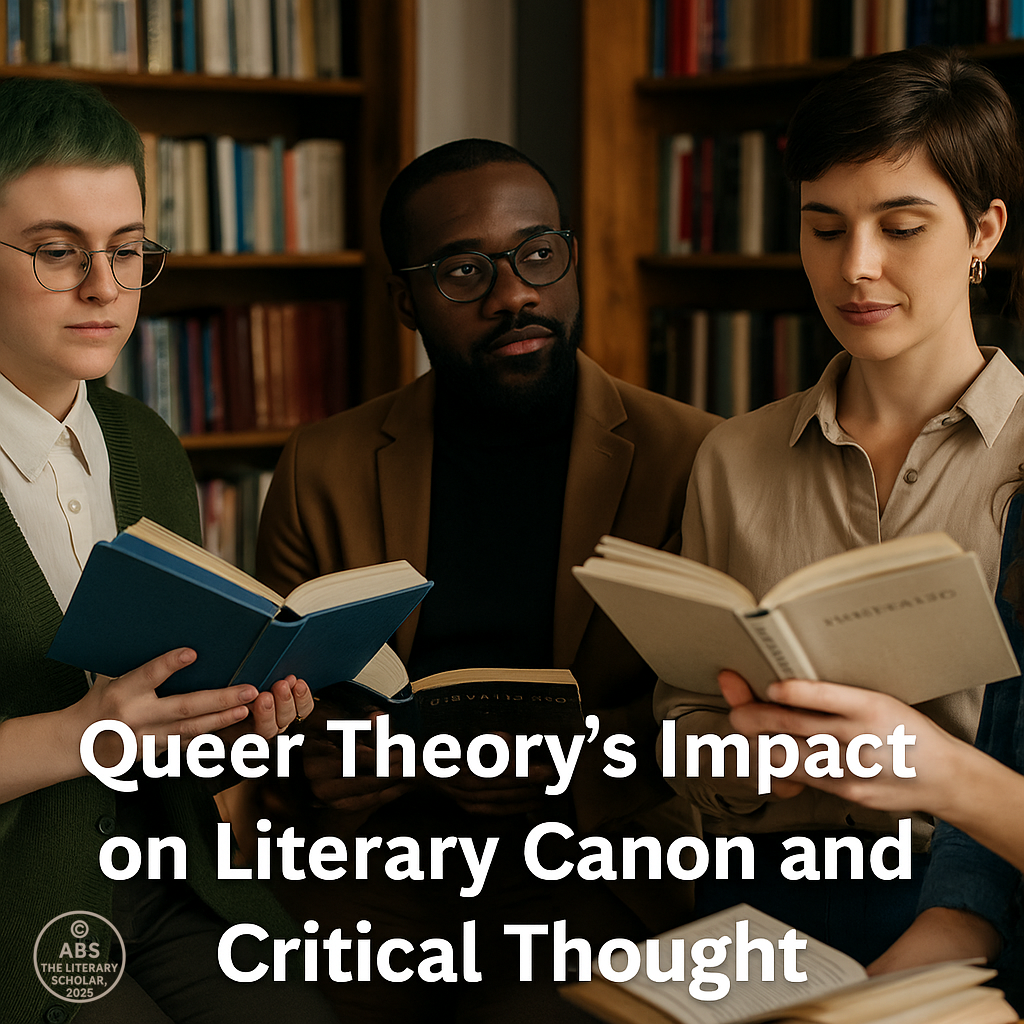
6. Queer Representation in Film, Media, and Digital Platforms: From Stigma to Visibility
In recent years, queer representation in film, media, and digital platforms has experienced a revolutionary transformation. The shift from marginalization and invisibility to visibility and authentic representation reflects a broader cultural shift in the understanding and acceptance of LGBTQ+ identities. Where once same-sex love and gender nonconformity were rendered invisible, coded, or depicted through harmful stereotypes, queer theory has driven a much-needed rethinking of how sexuality and gender are represented in the media.
Historically, the portrayal of LGBTQ+ characters in mainstream film was limited, either reduced to the background or used as symbolic figures to reinforce the heterosexual norm. When same-sex relationships were portrayed, they were often tragic, reinforcing the idea that queer love was doomed from the start. Consider films like The Children’s Hour (1961), which features a secret lesbian affair, but the plot revolves around the public exposure and disgrace of the characters, reinforcing the notion that LGBTQ+ love was a scandalous and unacceptable act. Similarly, Brokeback Mountain (2005), while an important step in LGBTQ+ film history, tells a tragic tale of repressed desire, wherein the characters suffer not only in love but in their very existence.
These narratives, which often placed queer characters in positions of victimhood, marginalization, and tragic endings, reflected a societal fear of same-sex love and the failure to understand non-heteronormative identities. However, with the emergence of queer theory, these early portrayals began to be re-examined, revealing subtexts of desire and hidden narratives that were previously ignored or overlooked by critics and the public.
A significant turning point in LGBTQ+ visibility came with the rise of queer cinema in the late 20th century, exemplified by films like Paris is Burning (1990), which documented the Ball Culture of New York City’s LGBTQ+ community. This film, which celebrated drag queens and gender nonconformity, allowed queer voices to speak for themselves, presenting a nuanced and vibrant portrait of queer lives. The film illustrated how queer individuals had long constructed their own spaces of acceptance and community, outside of the oppressive structures of mainstream society.
Moreover, RuPaul’s Drag Race, which first aired in 2009, has become a major cultural force in the representation of queer identities on television. This show has provided a platform for drag queens—individuals who perform gender in a subversive, artistic manner—to showcase their talent, personality, and creativity. By celebrating gender fluidity, self-expression, and queer joy, RuPaul’s Drag Race has helped shift the narrative around queerness from one of marginalization to one of visibility and pride.
Additionally, queer theory in literature has been instrumental in encouraging this shift, guiding filmmakers and creators to embrace a more authentic approach to LGBTQ+ narratives. Films like Moonlight (2016), which follows the coming-of-age journey of a young Black gay man, and Call Me by Your Name (2017), which explores the complexities of same-sex love in Italy, showcase queer characters who are not simply defined by their sexuality, but by their humanity, vulnerability, and resilience.
Alongside these mainstream productions, digital platforms like YouTube, Instagram, and TikTok have emerged as vital spaces for queer self-expression. The accessibility of these platforms allows queer creators to share their stories on their own terms, providing more authentic voices than ever before. Web series like “Sex Education” (2019–present) tackle sexuality, gender fluidity, and non-binary identities, making these narratives accessible to a wider audience and helping to normalize the idea of queer existence. These platforms offer more diverse portrayals of LGBTQ+ identities and provide queer creators the autonomy to tell their stories without the constraints of traditional film studios.
As queer theory continues to influence media representations, it is important to note the struggles that still exist. Despite significant progress in the visibility of queer characters in media, LGBTQ+ representation is still often limited or confined to narrow tropes. Transgender characters, for example, remain underrepresented in mainstream media, and when they are featured, they are often depicted in tragic or stereotypical ways. Furthermore, queer media representation is still largely dominated by white, cisgender, and male characters, leaving other aspects of the LGBTQ+ community, like transgender, queer women, and queer people of color, underrepresented.
However, the shift toward greater visibility in film, television, and digital platforms remains a significant step forward. These developments mark a new era where queer stories are not just visible, but authentic and empowered. In the coming years, as we continue to break down cultural barriers and push for more inclusive media, we may see more stories of love, identity, and resilience that resonate with people across the globe, regardless of sexual orientation, gender identity, or background.
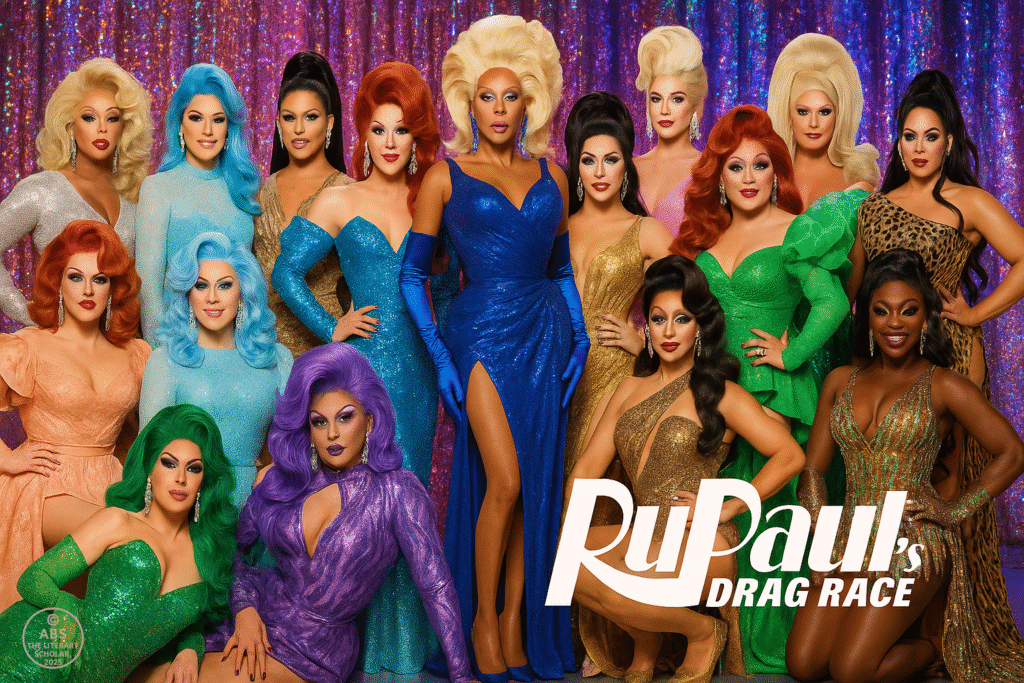
7. The Struggle for LGBTQ+ Acceptance: From Stigma to Inclusion
The journey of the LGBTQ+ community toward social acceptance, equality, and recognition has been long and fraught with struggle. For centuries, queer identities were repressed, hidden, or criminalized by both society and the law. Throughout much of history, those who did not conform to the heteronormative model were considered deviant, their identities marginalized and often erased. However, the fight for LGBTQ+ rights has progressed considerably, and though challenges remain, the road to inclusion is steadily advancing. The journey from stigma to acceptance is not just a story of changing laws or social attitudes, but one of the collective resilience of the LGBTQ+ community in the face of overwhelming adversity.
Historically, individuals who did not fit into the male/female binary were subjected to extreme societal sanctions. From being labeled as criminals, sinners, or psychopaths, to facing public humiliation or violence, LGBTQ+ people had little to no avenues for visibility or expression. Social, religious, and legal norms entrenched the idea that heterosexuality was the only acceptable sexual orientation, and anyone outside this paradigm was forced into silence. This repression extended to literature as well, where LGBTQ+ characters were virtually absent or depicted in the most negative light. In literary history, same-sex love was either erased or portrayed as tragic, with little room for exploring the complexities of queer experiences.
However, the 20th century marked a pivotal shift in the fight for LGBTQ+ rights, particularly after World War II. The 1950s and 1960s witnessed the emergence of LGBTQ+ advocacy groups like the Mattachine Society and the Daughters of Bilitis, which began pushing back against the widespread discrimination faced by gay and lesbian individuals. These early groups started to demand visibility and social recognition, though their voices were often drowned out by mainstream society’s fear of deviating from established norms. The Stonewall Riots of 1969, sparked by a police raid on a gay bar in New York City, are often considered the catalyst for the modern LGBTQ+ rights movement. The riots marked a turning point, not only in the fight for equality but also in self-empowerment, as the LGBTQ+ community began to assert their right to exist openly without fear of persecution.
Despite these early gains, full acceptance of LGBTQ+ individuals remained elusive for decades. The 1980s and 1990s were defined by the AIDS crisis, which disproportionately affected gay men, particularly in the United States. The government’s failure to respond adequately to the epidemic led to widespread stigma against gay men and further fueled public misunderstandings of queer identities. During this period, many LGBTQ+ activists found themselves fighting not just for civil rights but for basic health care, dignity, and respect in the face of discrimination and neglect. The AIDS epidemic tragically deepened the divide between LGBTQ+ people and heteronormative society, but it also galvanized a new generation of activists to demand both health care access and legal recognition. ACT UP (AIDS Coalition to Unleash Power) and other grassroots organizations helped raise awareness and advocate for LGBTQ+ rights in ways that had never been done before.
By the late 20th century, attitudes toward LGBTQ+ people began to shift. Queer theory and gender studies gained traction in academia, and LGBTQ+ characters began to appear more frequently in mainstream media, although often still with stereotyped portrayals. These representations were often simplistic and limited to the tragic gay character or the comedic sidekick. Despite this, the presence of LGBTQ+ characters in film and television began to break down long-held taboos and helped to normalize the queer experience in public consciousness. Films like The Wedding Banquet (1993) and Boys Don’t Cry (1999), which offered nuanced portrayals of queer characters and their struggles for acceptance, signaled a shift in cultural representation, demonstrating that queer lives are worthy of full, complex portrayal, not just the tragic or comedic tropes that had previously dominated.
The early 21st century ushered in a period of expanded representation and acceptance. The legalization of same-sex marriage in several countries, including the United States in 2015, marked a major milestone in the fight for equal rights. The rise of transgender rights advocacy, particularly through figures like Laverne Cox and Caitlyn Jenner, led to increased visibility and a deeper understanding of gender nonconformity. Television shows like Transparent (2014-2019) and Pose (2018-2021) have brought transgender identities and queer people of color into the spotlight, challenging traditional representations and giving voice to communities that have been historically overlooked. These narratives not only explore sexual orientation but also the complexities of gender identity, allowing for a more inclusive conversation about human rights and social justice.
Yet, despite these advancements, LGBTQ+ individuals continue to face significant challenges in terms of acceptance and inclusion. In many parts of the world, LGBTQ+ people still face discrimination, violence, and legal barriers. The ongoing struggles for transgender rights, workplace equality, and the right to self-identify demonstrate that while there has been progress, the fight for full equality is far from over.
As queer theory continues to evolve, it provides a critical framework to examine how LGBTQ+ identities are constructed and represented across both literary and social landscapes. The struggle from stigma to acceptance continues to shape the cultural narrative, and queer identities are finally being recognized as fully human, capable of experiencing the same love, joy, and pain as anyone else. Queer narratives have become central to the ongoing conversation about human rights, equality, and the right to exist without fear of discrimination.
The road to full inclusion remains challenging, but as representation continues to increase in media, literature, and society, the possibility of a truly inclusive world where everyone’s identities are valued and celebrated becomes more attainable with each passing day.
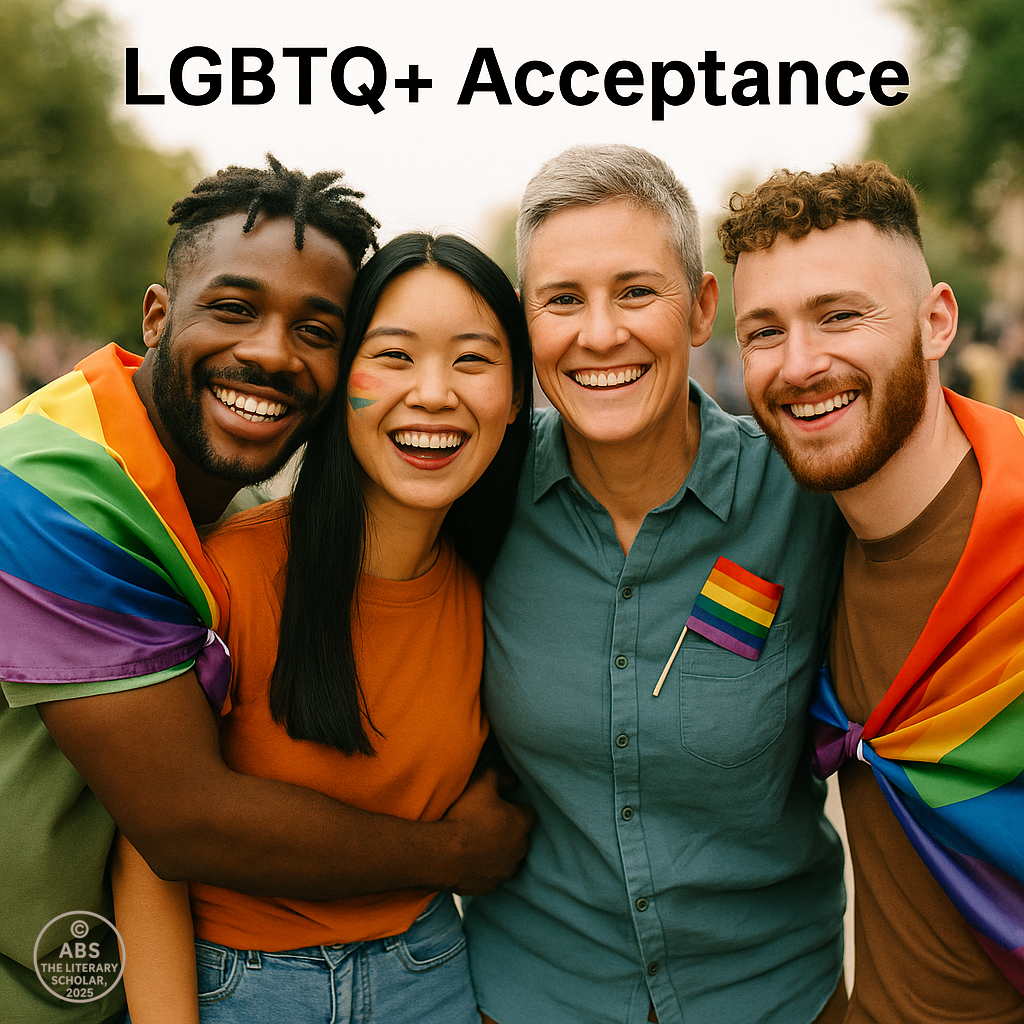
As we conclude this exploration of queer theory and its profound impact on literary criticism, media, and the social fabric, it is clear that the struggle for LGBTQ+ acceptance and visibility is far from over. Yet, the journey from stigma to inclusion has been a testament to the resilience of queer communities, whose stories, once silenced, are now pushing boundaries and changing the landscape of literature, film, and society at large.
The shift in representation—from hidden subtexts and tragic portrayals to the celebration of queer identities in literature, cinema, and digital platforms—marks a profound cultural shift. Queer narratives have expanded the boundaries of storytelling, allowing for the authentic expression of love, gender fluidity, and desire beyond the constraints of traditional norms. However, as we reflect on this progress, we must also recognize the ongoing struggles for true inclusion and equality that persist in many parts of the world.
The future of queer representation lies not in mere visibility, but in authenticity and equality—the continuation of progress toward a world where queer stories are not only seen but embraced, where every individual can live freely and authentically, without fear of judgment or discrimination.
As we move forward, let us remember that literature, media, and critical thought are powerful tools for change, capable of challenging oppressive systems and celebrating the full spectrum of human identity. Queer theory, with its radical emphasis on fluidity, diversity, and intersectionality, continues to be a catalyst for this transformation, encouraging us to think critically about the structures that shape our world—and to imagine a future where all identities are not only accepted but celebrated.
Signed,
ABS, The Literary Professor
www.theliteraryscholar.com
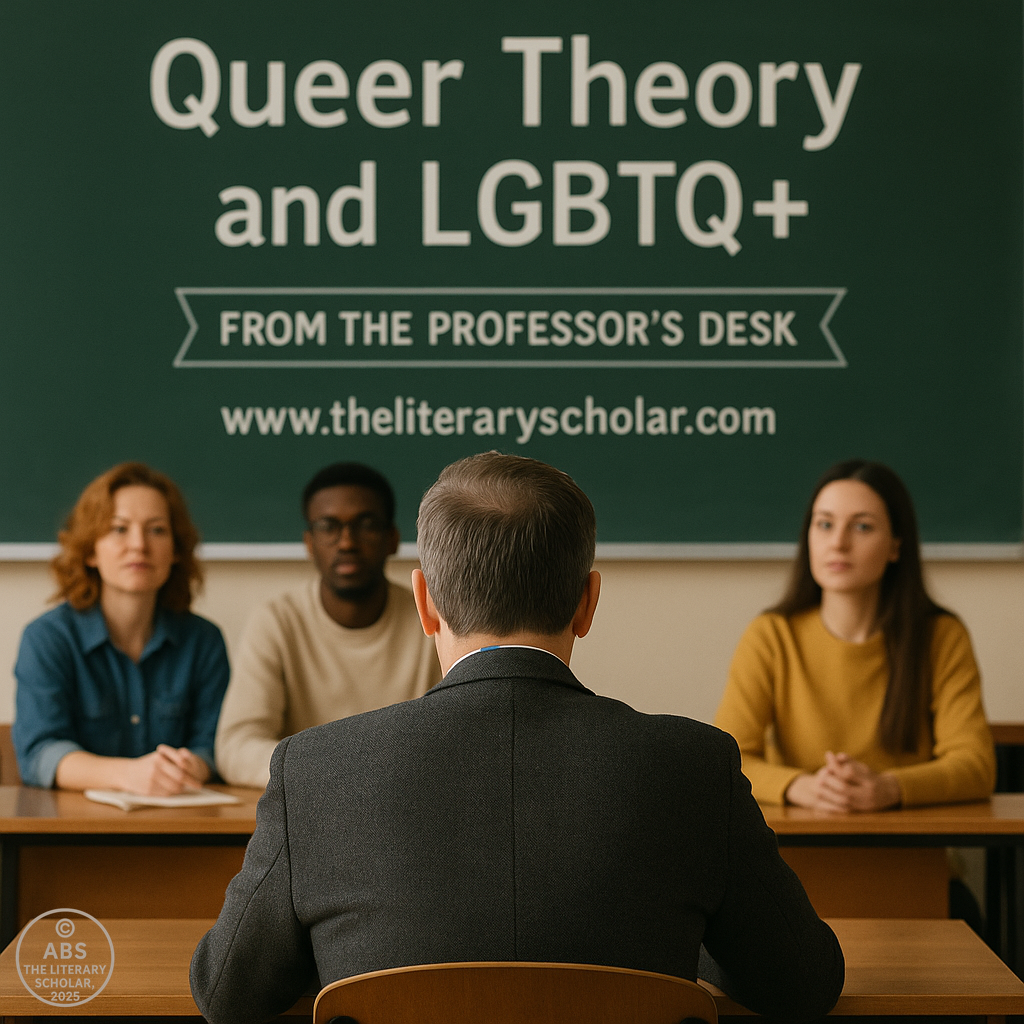
Share this post / Spread the witty word / Let the echo wander / Bookmark the brilliance
